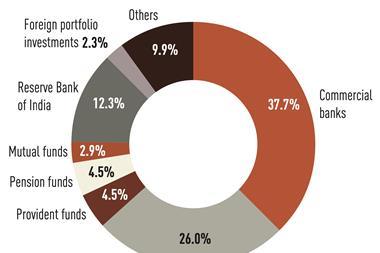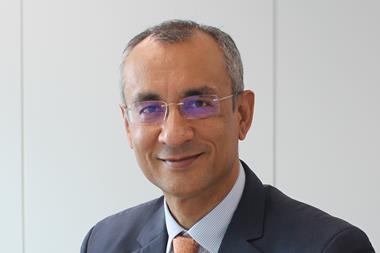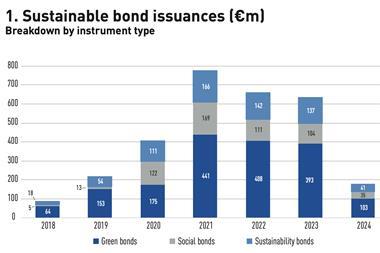With sovereign investors and other institutions looking to increase their infrastructure investment, the fundraising environment has improved significantly. Speaking from his base in Hong Kong Anthony Fasso, chief executive officer of AMP Capital’s international business says Asian clients have shown solid support for AMP’s new infrastructure fund offering. The pick-up in interest from Asian institutional investors has come particularly from Japan and China.
Fasso expects Chinese institutional investor interest to pick up in the next year or so due to a recent regulatory change that will allow Chinese life insurance companies to invest directly into infrastructure and other assets. The China Insurance Regulatory Commission in late 2010 released a series of new regulations, broadening the investment scope of insurance funds, including investment into direct assets. Under current regulations, life insurance companies have been limited to investing in infrastructure largely through loans, bonds and some equities.
In addition to Chinese interest, AMP is also seeing a big pick-up in interest from Japanese institutional investors, Fasso said. Driving this interest is another rule change. Starting 2012, Japanese companies will be required to report the funding gap for pension funds in profit and loss statements. Up to now, Japanese institutional investors have been minor investors in infrastructure, but “now they are forced to look at it,” he said.
Fasso said he has a keen eye on growth opportunities in north Asia, particularly Japan. AMP is one of the top foreign advisors to Japanese “Toshin” funds, or funds that pool money from Japanese investors to invest in foreign government bond and currencies.
With its international base in Hong Kong, it is not surprise that AMP Capital is setting its eyes on Asia, looking to tap into the region’s significant savings pool. The firm has about $98 billion in assets making it one of the largest asset management firms in the region. More than 90% of assets are from Australia and New Zealand. Outside of Australia, the firm’s largest market is New Zealand with $8.9 billion in assets. It has $7.6 billion under management in Asia and the middle east.
AMP brought on Fasso in February 2010 to help build up its international profile, which is a global remit. Fasso, who was formerly chief executive of AXA Rosenberg Asia Pacific and AXA Investment Managers Asia Pacific, has plenty of experience in the region. While at AXA, he set up joint ventures in China as well as India. He was also director of private wealth management at Deutsche Asset Management in Australia, where he led the business across Asia Pacific, as well as chief executive officer and head of institutional asset management at Bank Julius Baer & Co Limited in Hong Kong.
In March, AMP Capital raised 241 million euros from 12 institutional investors, including China Life Insurance (Group) Company, for a new global infrastructure bond fund. Fundraising has been running “ahead of schedule, says Fasso, with the fund targeting of 500 million euros in total.
“Many global pension funds, for the last one to two years, have been dealing with legacy issues. Now with the crisis behind us, funds are getting their investment programs back on track,” he said.
According to data provider Preqin, infrastructure fundraising in the first quarter was slow in terms of final closes but the number of funds holding interim closes during the period was “encouraging.” Preqin expects fundraising levels to pick up through the year. Almost 75% of respondents to a study by in the third quarter said they intend to invest in infrastructure over the year “showing a healthy appetite for infrastructure funds,” the firm said.
Interest in unlisted assets of infrastructure and real estate has been particularly keen, he added. The asset class particularly appeals to investors who are keen to start investing in infrastructure, but uncomfortable with taking on equity, he said. AMP has seen many opportunities come up in the asset class since banks started backing out of mezzanine debt during the crisis. With fewer players in the space, firms such as AMP have stepped up to the plate. “Margins are very attractive,” he said.
AMP’s new fund, called the AMP Capital Infrastructure Debt Fund, invests in the subordinated debt of infrastructure assets - water, gas, electricity, transport and hospitals. The portfolio be investments in the subordinated debt of 10 to 15 companies in OECD countries.
AMP’s parent company, AMP Group, currently has about $115 billion in assets under management, will have about $130 billion after its billion acquisition of AXA Asia Pacifc’s Australia and New Zealand assets. The deal, which closed April 1, saw AMP buy Axa APH for $13.47bn, and then Axa buying back Axa APH’s Asian business for $9.92bn in cash. It’s unclear if the deal will add to AMP Capital’s Australia and New Zealand assets. The firm’s Asia assets will be unchanged.
The firm, including its partnership with Brookfield Investment Management Inc., AMP Capital Brookfield, currently has about a total of 34 people in Singapore, Hong Kong, Japan and India. AMP’s Japan office has grown considerably to 11 from 6 sales staff. There is also a new Japan property business with 4 people. The India office, which currently has 5 people is set to grow this year. AMP Capital has a track record with infrastructure bonds; it has managed a similar fund for Australian investors for the past decade. In addition, the firm manages an Australian infrastructure fund, two Indian infrastructure funds, a Chinese and Indian infrastructure fund, among others. The firm also runs several listed REITs with Brookfield.
* May’s Federal Budget in Australia included measures aimed at promoting the superannuation sector’s investment in infrastructure projects. Key proposals include removing impediments to private sector investment by establishing tax provisions for projects designated to be of national significance. Losses generated by designated infrastructure projects would be made exempt from the Continuity of Ownership Test and the Same Business Test, and uplifted at the government bond rate. This will provide a long-term investment pipeline for infrastructure investment which forms a core part of many Australian superannuation fund portfolios.
Pauline Vamos, chief executive of the Association of Superannuation Funds Australia (ASFA), welcomed the infrastructure investment changes in the Budget and said there was potential to establish a new model for the development of infrastructure in Australia. “Australian superannuation funds have been long-term investors in infrastructure and we have previously called for a 20 year pipeline. Tax provisions and investment incentives for infrastructure investments will contribute to making them more attractive to super funds,” Vamos said.
AIST, many of whose not-for-profit member funds are heavily invested in infrastructure assets said, “Super funds have traditionally been heavily involved in infrastructure investment to maintain diverse asset allocations. These measures will provide encouragement for super funds to continue to invest in the nation’s infrastructure.”












No comments yet